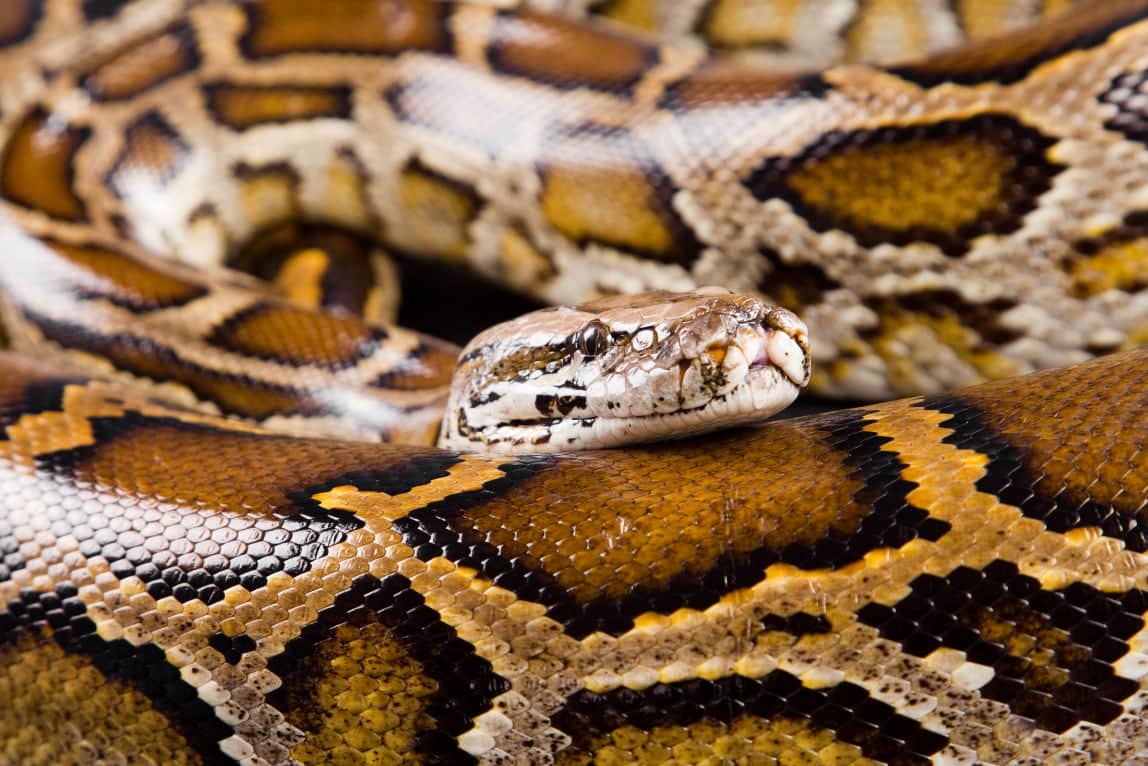The python is known as the gentle giant in the reptile hobby for its reportedly calmer demeanor than that of the other large constricting snakes.
The Burmese python (Python bivittatus) joins the African rock python (Python sebae), reticulated python (Python reticulatus), the yellow anaconda (Eunectes notaeus) , green anaconda (Eunectes murinus) Beni anaconda (Eunectes beniensis), boa constrictor (Boa constrictor sp.), as one of the largest snakes in the world. The python is known as the gentle giant in the reptile hobby for its reportedly calmer demeanor than that of the other large constricting snakes. It can grow to more than 20 feet in length and weigh more than 200 lbs. Here are five facts about this species, which has been in the news as of late for hatchlings being preyed upon in the Everglades by the venomous cottonmouth snake.
- The Burmese python is native to Southern and Southeast Asia and can be found in Burma (now Myanmar), India, Nepal, Bhutan, Bangladesh, Thailand, Laos, Cambodia, Vietnam, northern continental Malaysia, and southern China, It is also found in Hong Kong, and in Indonesia on Java, southern Sulawesi, Bali, and Sumbawa.
- The Burmese python is a large python that can grow to more than 20 feet in length, with most specimens growing to about 16 feet in length. They can weigh more than 200 lbs with one captive specimen named Baby reportedly weighing 400 lbs at the time of her death.
- The Burmese python is found in grasslands, marshes, woodlands, river valleys, swamps and localities with permanent water sources. The Florida Everglades, where the large constricting snake is invasive and now part of the ecosystem, is an ideal location for this ambush predator.
- The Burmese python feeds on a variety of prey items, including, birds, small mammals and deer in their native habitat. They also feed on amphibians and other reptiles.
- The Burmese python is listed as vulnerable on the IUCN Red List and is a CITES II Appendix animal. This is primarily due to habitat loss in its native range and over harvesting for the meat and skin trade. In its native range, the large constricting snake is protected in Hong Kong, Thailand, Vietnam, China and Indonesia.



